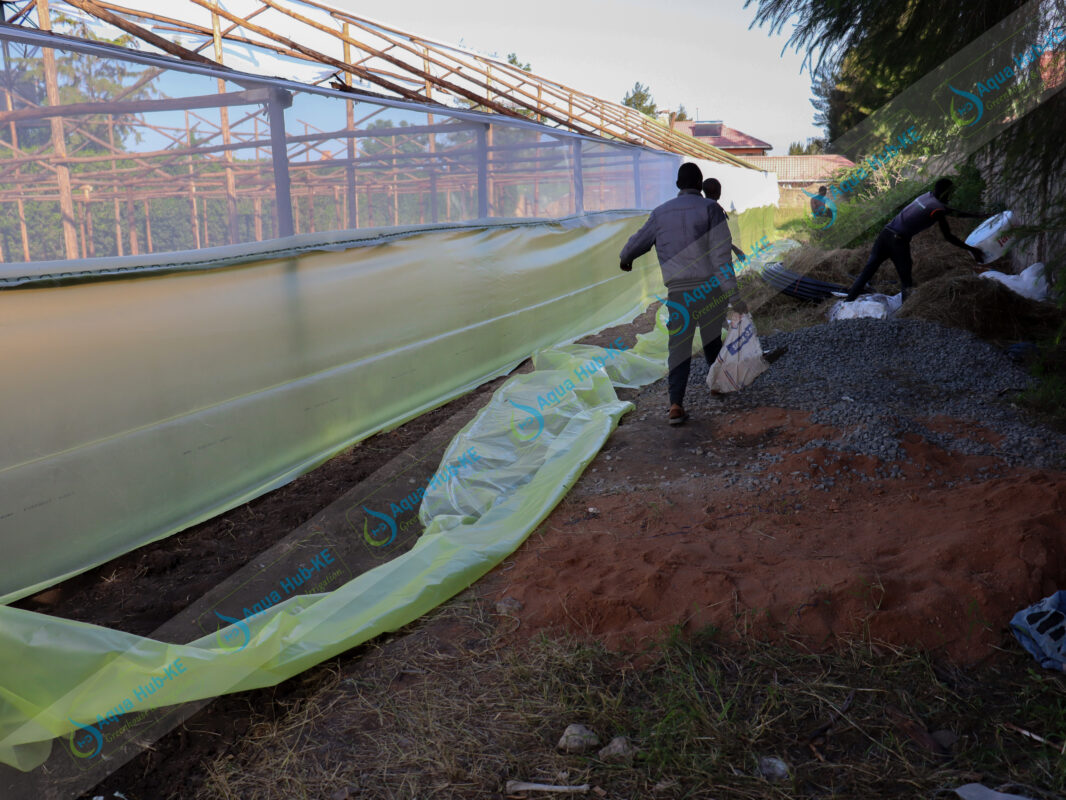With the increase in use of greenhouses for high value crop farming, demand for quality insect nets is on the rise. Greenhouse insect nets are ideal for designing greenhouses because of their ability to keep pest out of bound.
Despite the optimal temperature inside the greenhouse, pest might still be a problem and needs a sustainable way to curb them.
Greenhouse Insect Net Fabric
Insect net fabric consists of threaded polythene strands knitted to form a mesh surface with tiny uniform holes in the material. Insect nets have different mesh sizes according to the insects to prevent.
The fabric is white in colour, often preferred for its reflective nature.
Benefits of Greenhouse Insect Nets

Lowers Pesticide Use
Because insect netting physically block pests, there is less needed to spray chemical insecticides. This saves cost, reduces chemical residue on crops, reduces health risks for farmers, and supports more eco‑friendly/organic farming.
Higher yields and better quality8
Nets help protect crops from pest damage, meaning fewer damaged fruits or leaves. Crops stay cleaner, more marketable. Some Kenyan studies show up to 40% higher yields under net houses compared to open fields.
Soil Health and Stable Growing Environment
Reduced use of pesticides helps preserve the health of the soil inside the greenhouse. The environment is also stable without harmful pests that affect yield.
Market regulations are met
Quality and organic products are produced, and they comply with quality and pest control regulations in the market. This means the produce is safe for supply and thus ready to generate income.
What to Look for: Choosing the Right Insect Net
When buying insect net material, you should consider several important factors below:
- Mesh size – the mesh size to consider depends on which insects are affecting your crops. Small insects like whiteflies require smaller mesh of about 0.4 mm.
- UV resistance – for a quality and durable net, UV resistance needs to be considered. To know this, check the manufacturer’s label.
- Quality – you only get quality insect nets from reliable and rated suppliers.
- Material – also the material of the insect net affects it durability. HDPE nets have long term performance.
Tips for Using Greenhouse insect Nets
Maintenance is essential
Insect nets are prone to tear if not properly maintained.
Matching crop type and region
Some crops require insects for pollination while others self-pollinate. the use of shade nets should be tailored according to the crop needs.
Requires supplementing with other pest control measures
Insect nets are reliable in pest control but do not mitigate all pests. Some insects such as cutworms can be found in the soil and would require pesticides to curb them.
Best Practices for Proper Function of Greenhouse Insect Nets
Ensure good sealing
Even small holes or poorly sealed edges defeat the purpose. Use wiggle wires, nails, clips, or other fixings carefully. Overlapping joins, well‑secured edges, double screens at doors if needed.
Design ventilation carefully
Include vents or windows that can open, or roll‑up sides, to allow air exchange. On hot days open them; in cold/humid weather you may reduce openings. Use shade nets in conjunction if needed. Measure temperature/humidity sometimes.
Clean & maintain regularly
Wash off dust, dust reduces light and airflow. Repair holes or tears quickly. Replace nets that are badly worn or degrade. UV exposure over years weakens nets, so inspect periodically.
Choose correct mesh size for crop and pest
For example, young seedlings and tomatoes may need very fine mesh (e.g. 0.4 mm) to keep out whiteflies and thrips. For larger crops or less vulnerable periods, coarser mesh may suffice and cost less while giving better air flow.
Use in combination with other integrated pest management (IPM)
Nets are one tool. Other tools include clean planting materials, crop rotation, biological control, monitoring pest presence, and possibly spot pesticide use. This reduces risk and improves sustainability.
Where to Buy Greenhouse Insect Nets
Aqua Hub Kenya
We stock UV‑resistant insect nets white color of dimension 3.5 by 50 m. We sell greenhouse insect nets at KES 110 per square meter.

